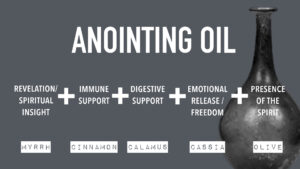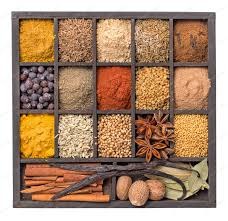Ki Sisa 2022: Cinnamon
by devadmin | February 17, 2022 10:52 pm
Raboyseyee and Ladies,
No shout outs last week but we are delighted to begin this week’s parsha review with a shout out and Mazal Tov wishes to our friends Miriam and Yehudah Perlstein, upon the engagement earlier this week of their beautiful daughter Talia, to Yonah Cohen, he the son of Yackov and Ruthie Cohen, both families from here in Lawrence, NY. More information to come. Until then, may Talia and Yonah be blessed to enjoy many decades of blissful marriage. Mazel tov to both extended families.
Cinnamon
We begin here: Two or so months ago, and after three vaccines, the heylige Ois was hit with a very light case of the omicron. His sense of smell was lost for over a week; yikes! Having heard that essential oils might help wake up the senses, he resorted to sniffing peppermint and eucalyptus multiple times a day and taka, the nose is working perfectly again. We lead with smell because incense and other mixtures that give off a pleasant aroma are featured in this week’s parsha; let’s jump right into it.
Yearly, as this parsha comes around (along with its sister parshas of Teruma, Tetzaveh, Vayakhale and Pikuday), all dealing with -aside from other topics of importance- the instructions to build the RBSO a Mishkan, and all other accoutrements, the Ois begins to ponder the origins of the materials list. He has written on this topic extensively and wonders about the sourcing of the various materials. Our sages of yore and other exegetes -at times, using their vivid imaginations- spilled much ink positing theories on how certain Mishkan related items magically appeared in the midbar. Their answers, while enjoyable to read -hec; a few could mamish be emes, ver veyst- have not fully and definitively answered the questions on my mind. And this past shabbis, as the Toirah reader was going through Tetzaveh, the heylige Ois was busy reading ahead to Ki Sisa where the RBSO instructs Moishe to become a ‘rokach,’ a perfumer, and to create mixtures using various spices, olive oil, and other ingredients all to be used together for specific purposes. The concoctions, when properly applied, made things holy. The instructions left the Ois wondering azoy: where in the desolate midbar where the Yiddin to find items such as cinnamon, liquid myrrh, and others? He then turned to chaver Shlomo Gottesman and asked this very question. Shlomo’s answer: “taka a good question.” More on this topic later.
Di vlet zugt (the world says) that the word perfume derives from the Latin perfumare, meaning “to smoke through” The English word perfume is derived from two Latin words: per, meaning through, and fumus, meaning smoke. Perfumers are trained professional artists who create fragrances for a multitude of products. While perfume literally means through the smoke, it has come to mean “a pleasant cosmetic fragrance.” The word kitores (קטורת), found and discussed in our parsha is often translated as “perfume,” and also means smoke, or more specifically, sweet smoke (i.e. incense). Other non-burning “perfumes,” from flowers and spices, were also known and used. They say that perfumery is the art of making perfumes, that it all began in ancient Mesopotamia, Egypt, the Indus Valley Civilization and possibly Ancient China. According to Wikipedia – who seems to know almost as much as did Rashi, the world’s first-recorded chemist was a woman named Tapputi, a perfume maker mentioned in a cuneiform tablet from the 2nd millennium BC in Mesopotamia. She distilled flowers, oil, and calamus with other aromatics, then filtered and put them back in the still several times. The first modern perfume ever made was known as Hungary Water. It was a blend of scented oils (rosemary, thyme, orange blossom and lemon) contained in an alcohol solution. Queen Elizabeth of Hungary had commissioned its creation in the early 1300’s. Ober, this week we ask if any, or all of this information is emes? And the answer? The definition of perfumery may be emes, ober, who invented it and when, dates back to the heylige Toirah – far shteyt-zich- (of course), and this week’s parsha, where in the year 2448, the RBSO ordered up a few custom blends of oils and incense.
 Let us begin with a few pisukim from Ki Sisa -most well-known, of course- for the eygel caper, the sin that keeps on giving. The Ois has previously written in this topic, ober not this time around. The RBSO instructs Moishe to take for himself two compositions of perfume meaning (as we will read below) for Moishe himself to actually formulate the concoctions). The first was the “shemen hamishca” (the anointing oil), used to anoint the kohanim (priests) and the sacred vessels of the tabernacle. The anointing oil is the topic of interest and let’s read a few pisukim innaveynig (Shmois 30: 23-29): “Take the following fine spices: 500 shekels of liquid myrrh, half as much (that is, 250 shekels) of fragrant cinnamon, 250 shekels of fragrant calamus, 500 shekels of cassia—all according to the sanctuary shekel—and a hin of olive oil. Make these into a sacred anointing oil, a fragrant blend, the work of a perfumer. It will be the sacred anointing oil. Then use it to anoint the tent of meeting, the Ark of the Covenant law, the table and all its articles, the lampstand and its accessories, the altar of incense, the altar of burnt offering and all its utensils, and the basin with its stand. You shall consecrate them so they will be most holy, and whatever touches them will be holy.”
Let us begin with a few pisukim from Ki Sisa -most well-known, of course- for the eygel caper, the sin that keeps on giving. The Ois has previously written in this topic, ober not this time around. The RBSO instructs Moishe to take for himself two compositions of perfume meaning (as we will read below) for Moishe himself to actually formulate the concoctions). The first was the “shemen hamishca” (the anointing oil), used to anoint the kohanim (priests) and the sacred vessels of the tabernacle. The anointing oil is the topic of interest and let’s read a few pisukim innaveynig (Shmois 30: 23-29): “Take the following fine spices: 500 shekels of liquid myrrh, half as much (that is, 250 shekels) of fragrant cinnamon, 250 shekels of fragrant calamus, 500 shekels of cassia—all according to the sanctuary shekel—and a hin of olive oil. Make these into a sacred anointing oil, a fragrant blend, the work of a perfumer. It will be the sacred anointing oil. Then use it to anoint the tent of meeting, the Ark of the Covenant law, the table and all its articles, the lampstand and its accessories, the altar of incense, the altar of burnt offering and all its utensils, and the basin with its stand. You shall consecrate them so they will be most holy, and whatever touches them will be holy.”
Shoin, lest you think that Moishe went about the business of procuring the ingredients, and then perfuming the oil mixture with which he sanctified the kohanim, the vessels, and the job was done, you will of course not be surprised to learn how much controversy and machloikes surrounded the anointing oil. The heylige Toirah tells us that five ingredients were used in the anointing oil: Pure myrrh (מר דרור, mor deror) 500 shekels (about 6 kg (13 lb)) Sweet cinnamon (קינמון בשם, kinnemon besem) 250 shekels (about 3 kg (6.6 lb)) … Olive oil (שמן זית, shemen zayit) one hin (about 6 L (1.6 US gal), or 5.35 kg (11.8 lb). Ober, as we will read below, the identity of these ingredients is disputed. Says who that the English translations above were mamish what the RBSO ordered? Furthermore, our sages of the heylige Gemora (Kerisus 5a-b), disagreed whether the various fragrances were extracted by boiling them in the olive oil, or whether they were extracted in water and then blended into the olive oil. It’s a great read. Though most English translations tell us that קינמון (Kinnemon) is cinnamon, not all agree. If not cinnamon, what was ordered? What else could it be? That of course depends on who’s being asked and let’s see what some had to say. Says the Ramban: kinnemon besem could be one of four different items. Yikes! Says Rashi: it’s probably cinnamon. Ober says the Rif, the Rambam, and others, that it’s not. Ok, it’s not! Why not? Because, says the Rif, that kinnemon is more similar in appearance to straw and says the RambaN that several midrashim describe kinnemon as a field grass that goats forage; certainly not a description of cinnamon, or any other tree bark. Do we know what it was? Not! Some say the word means muskroot, and others suggest the RBSO ordered up some palmarosa, (also called Indian geranium or ginger grass). Why would Rashi believe the RBSO insisted on cinnamon? Was it because Kinnemon sounds somewhat like cinnamon? And says the RambaN that kinnemon-besem is a fragrant-smelling cane or reed and is most closely related with a species called, darasini, which is the Arabic word for cinnamon. Got all that? Great and veyter.

The bottom line: RambaN agrees with Rashi that cinnamon is one of the spices used in the shemen hamishcha, but disagrees as to which Hebrew word refers to it. What about the ingredient known as Mor? Say the Rambam and Saadya Gaon that Mor is what we call, in English, musk, a glandular extract from various animals. Though most of them, such as the muskrat, civet and otter are non-kosher, there is a variety of deer and a variety of wild ox, both of them kosher species, that might be the source. Case closed? Not! The ibn Ezra and the Raavad disagree and the ibn Ezra contends that the Rambam’s interpretation does not fit the description of the word mor in other pesukim in Tanach (Shir Hashirim 5:1, 5); whereas the Raavad argues that the Toirah would not want an extract of a non-kosher species in the Mishkan. The bottom line: says Rabaynu Bachya, azoy: those who disagree with Saadya Gaon and the Rambam usually suggest that mor is myrrh, a tree exudate (also called a gum) of the species commiphora myrrha and related varieties. Got all that? Givaldig; you’re an expert. Raboyseyee, that’s but the beginning of the disagreements because in Posik 24, we read these instructions
| 24. and of cassia five hundred [shekel weights] according to the holy shekel, and one hin of olive oil. | כד. וְקִדָּ֕ה חֲמֵ֥שׁ מֵא֖וֹת בְּשֶׁ֣קֶל הַקֹּ֑דֶשׁ וְשֶׁ֥מֶן זַ֖יִת הִֽין: |
According to Rashi and Targum Unkelos, the Aramaic word for kiddah is ketziyah, which translated as, cassia, a tree whose scientific name is cinnamomum cassia, which is similar to cinnamon and also has a fragrant bark. Again, this identification is not certain. The Rambam calls it “kost” (often pronounced and printed with the Hebrew letter shin as kosht), which is usually assumed to be costos, the root of an annual herb called Sausurea lappa. From the explanation that the RambaN provides to the ketores (pisukim 30-34), it can be demonstrated that he disagrees with both Rashi and the Rambam, and identifies kiddah as a different herb. The bottom line: when it comes to chapping what the RBSO wanted in the mixture, there is little agreement. And why should there be? Veyter gigangin (let’s move forward).
Whatever the real ingredients were, the Rambam and the Sefer Hachinuch agree on this: there are three mitzvis, one positive mitzvah (mitzvas ah-say) and two negative (lo sa-says) connected to the instructions. It’s an ah-say (Rambam #35, or Chinuch, #107) to manufacture, use correctly, and treat this unique anointing oil in a special way. The mitzvah includes treating the shemen hamishcha as holy, though it’s unclear, what that entails. Next: it is verboten (lo sah-say) to pour the final concoction onto an unauthorized person (Rambam, Lo Sa-say #84; Chinuch, #108), and it is prohibited to smear or pour the oil onto the skin of any person, even onto someone who is a permitted recipient. It’s for anointment purposes only; massages and what at times go with them, if you chap, are out! Says the heylige Gemora (Kerisus 7a) azoy: a Koihen Gadol who smears shemen hamishcha on his leg as a balm violates the prohibition. And this: it’s a loi sa-say, a big no-no, to blend a recipe equivalent to the shemen hamishcha Moishe mixed (Rambam, Lo #83; Chinuch, #109). In other words: the formula was proprietary to Moishe alone. Not to worry because as always, the heylige Gemora gave us a workaround, a giant loophole, leading to dozens and dozens of sites selling anointing oils online; it’s yet another Toirah inspired business, this one geared mostly to the umois ho’oilom (Christians and others). What’s pshat loophole and how does it work? If it’s specifically verboten for anyone to make the mixture as did Moishe, how is it sold today? And for that Raboyseyee, we look again to the heylige Gemora where our sages of yore -busy as many of them were running their own businesses (not just sitting around all day -shoutout to Aunt Myrna)- looked at the words of the prohibition and said azoy: What do the words, “any likeness of its formulation shall not be made” mean? The answer is that the prohibition of blending the shemen hamishcha is violated only when someone uses the exact quantities of the different fragrances. However, if someone blends the correct proportions of the shemen hamishcha, but not the same amounts that were mixed by Moishe, there is no violation. In other words, someone who produces a mock shemen hamishcha by mixing the five ingredients in the correct proportions, but in larger or smaller quantities than those described, is not guilty of violating the prohibition. The bottom lines: where the initial ingredients were found by Moishe, we were never told. Ober one thing is zicher: ever since their introduction, many an enterprising Toirah inspired entrepreneur -including goyim- have figured out one thing: The formula is a business opportunity and today -as mentioned- one can purchase anointing oils on myriad sites. Business is business!

Shoin, let’s move on and try chapping (wrapping our heads or arms around) the instructions: Moishe is instructed to make שֶׁ֚מֶן מִשְׁחַת־קֹ֔דֶשׁ, oil of a sacred anointment. This sacred anointment is essentially a spiced and fragrant oil. The Yiddin are in the Sinai desert. It’s real! Where were they – in this case Moishe alone- to procure the spices to make this oil? The RBSO told him how to mix the spices but not where to get them? What’s pshat? Ober, let’s get real: the instructions were not whispered into Moishe’s ears; they are mamish reduced to writing. Where was he to find 500 shekels of liquid myrrh and half as much sweet-smelling cinnamon? He also needed 250 shekels of sweet-smelling cane, and 500 shekels of cassia, according to the shekel of the sanctuary, whatever that means. And let’s not forget a “hin” of olive oil (over one gallon). One thing is zicher about the very specific instructions: there was no doubt about the formula or the preparations: the RBSO knows exactly what He wants in His House. Another thing is zicher: it could not have been a cake walk finding and gathering ingredients, like cinnamon, olive oil (we imagine there are not many olive trees growing in the Sinai desert), and liquid myrrh. What’s pshat? Was Moishe the first perfumer?
Shoin, before we dig for answers, let’s properly introduce the anointing oil, which as an aside, is mentioned 20 times in the heylige Toirah and the Novee. In our parsha it was poured on the head of the high priest, his descendants, the sprinkling the tabernacle and its furnishings to mark them as holy and set apart to the RBSO (Exodus 25:6; Leviticus 8:30; Numbers 4:16). Three times it is called the “holy anointing oil,” and the Yiddin were -as mentioned above- strictly forbidden from reproducing it for personal use (see pisukim 32-33). There is no indication that the oil or the ingredients had any supernatural power. The heylige Gemora (Kerisus 5A) dedicates an entire folio to discussing the making of the oil and several very interesting restrictions. Ober is our parsha the first source of oil and spice mixtures? Not! Let us harken back to Parshas Vayichi where both Yaakov and Yoisef passed away. We read how the Egyptians embalmed Yaakov though we are not told how and which of various perfumes and spices were used in the process. Says the Shadal, azoy: “To embalm his father” – they would remove from the dead body the brain and the innards, and would fill the stomach with herbs and spices, and afterwards they would salt the body with nitrum for forty days. Herodotus says seventy days, and Diodorus says more than thirty days. And there is no doubt that this practice was known among the Israelites and to Moishe, better than it was known to the Greeks. Let us also recall that Yoisef was embalmed and we imagine that he too was the beneficiary of some oil and spice mixture. Shoin, since we’re talking about oil, we may again harken back to Yaakov who was the first person to do any anointing when he -on the run from Eisav- awoke from his dream and dedicated an altar, the very rock he slept on by pouring oil over it. Why Yaakov was carrying oil on his trip, ver veyst.
Shoin, earlier we asked about ingredient procurement in the midbar and the question is azoy: the Yiddin, we read a few weeks back, were chased out of Mitzrayim. Days or weeks before, they were instructed to “borrow” gold, silver and clothing from their neighbors, the Mitzrim. The panic was on to get out: there was no time for the dough to rise (they were busy looting more valuable dough), hence we eat matzo by mouth for eight days and pay through the nose. Oib azoy (if that’s the case), and so we were taught, how and from where was Moishe to procure the various items needed to formulate the “shemen hamishca? Was Moishe by chance packing cinnamon, and olive oil? Were we not taught that the midbar -most parts- had not even water? We were! More than once in their 40-year midbar excursion, there were disturbances over water. Were we not taught that the midbar was devoid of food? We were! Did Moishe not relay the Yiddin’s complaints over food? Did the RBSO not then respond with Munn which sustained the Yiddin for the duration of their journey? And if all this is emes – of course it is as it’s recorded in the heylige Toirah- where the hec was Moishe to get his hands on the ingredients to make the concoctions the RBSO asked for? Did he delay his exit from Mitzrayim because he needed to fill a suitcase with a hin of olive oi? What’s pshat?
Even more puzzling is this: the heylige Ois had done exhaustive research on this topic and while much is written about the holiness of the final mixtures, and the miracles associated with the oil, precious little – in fact, nothing- is written by the same or other sages on the sourcing of the spices needed for the concoction. Were our sages stumped? Did the ingredients appear out of thin air? Is it shayich (remotely possible) that the midbar had cinnamon trees? Are we to believe that as the Yiddin were leaving Mitzrayim, Chaim said to Yankel azoy: wait up Yankel: I need to pack some cinnamon! And I’ll also take some last-minute myrrh and olive oil? Mamish? Is that how it went down? Just who decided to pack olive oil when they were busy schlepping gold and silver? Were they planning a line of essential oils in case of a covid breakout? Was an otherwise barren midbar rich in olive trees? Why isn’t this topic covered?
Shoin: What to do when one cannot find answers to questions? What to do when otherwise holy and knowledgeable rabbis who opine of every lacuna and ask questions even when none exist, don’t bother asking how, what, when, and from where those items came about? Shoin, for those reasons, the heylige Ois has come to conclude that these items, and kimat all others -to include planks of wood (the keroshim) in very specific measurements, specialized saws, blades, and all other tools needs – were all placed there by the RBSO and His Malochim in the first ever Scavenger Hunt as mentioned several times (too many for Jeff Rosenberg’s liking) in the past. There is no other logical explanation. Is there?

This week, the heylige Ois will step out of his comfort zone and proffer a few alternative explanations; see if any talk to you. Ershtens (firstly), is it shayich that while navigating the midbar, from time to time, the RBSO had the Yiddin travel to, and spend time at an oasis? Grada it is; it happened at least once. An oasis, as we all know, is an area made fertile by a source of freshwater in an otherwise dry and arid region. What grows or can, in an oasis? Say the heylige internet that dates, cotton, olives, figs, citrus fruits, wheat and corn (maize) are common oasis crops. Underground water sources called aquifers supply most oases (real word). In some cases, a natural spring brings the underground water to the surface. Shoin, we found olive oil! Let us recall what happened after the episode at Marah where the bitter springs were turned into drinkable water. Moishe and the Yiddin traveled to a place called Elim. The heylige Toirah (Bishalach 15:27) describes Elim as having 70 palms (trees) and 12 wells. Mamish bashert; one well for each of the 12 shvotim. Gishmak! And didn’t the Yiddin stop at Elim before the eygel caper and before instructions were given to build the Mishkan? Indeed, they did. Is it shayich that they also found cinnamon and other spices there? Why not? Elim was an oasis and what’s a good oasis without cinnamon and other goodies?

Another Ois pshat: the Yiddin -as they very much enjoy doing ‘ad hayoim hazeh’ (until today) -especially the women- simply purchased all these items while traveling in the midbar. Yiddin love to shop and buy stuff. It’s in our DNA. Was there a makolet along the way? A spice dealer? Why not? Let’s recall how the holy brothers sold Yoisef to a traveling band of spice and essence merchants who were punkt (as it were) heading to Mitzrayim to sell their wares. (Bereishis 37:25). In other words, the Yiddin weren’t occupying all the sand in the desert. Others, including merchants may have passed through selling their wares which punkt included the spices and oil needed for the shemen hamishcha. Is the RBSO great or what?! If you don’t like that pshat, let’s try another. As it turns out, the Yiddin were not alone in the midbar. The desert of Sinai is situated between Rephidim and Har Sinai, with the wilderness of Sin between it and Elim (Shmois 16:1; 19:1–2). During the period of the Exodus, the desert was occupied by the Amalekites, who disputed the passage of the Yiddin at Rephidim. (As an aside, in the period of the monarchy, Shaul and Dovid also fought the Amalekites (I Shmuel 15:7, 27:8). Let us recall how the Amalekites attacked the Yiddin from behind. As an aside, the RBSO never forgave him and his army for that sneak attack. Rear entry is tricky, if you chap. In any event, could they have been carrying various spices with them? Why not?
And let’s not forget how the Yiddin -later in their journey- stopped off at a place called Shitim which featured hot spicy Midianite shiksas who seduced the Yiddin and lured them in for sexual favors. The point is that while the heylige Toirah remains focused on the travels of the Yiddin and later in Sefer Bamidbar delineates every major stopover, we can easily argue that they came across many nomads who sold stuff, including spices and oils. The bottom line: there are several logical explanations on how Moishe was able to procure the spices and oil necessary for the formulation of the anointing oil. Another bottom line: it’s likely the case that our sages also thought of these logical explanations and because the answers are so logical, they didn’t feel compelled to waste ink on the topic. In other words: perhaps the Ois’s questions are not real questions. If the RBSO ordered up spices, He avada made sure the Yiddin had them at their ready.
A gittin Shabbis-
The Heylige Oisvorfer Ruv
Yitz Grossman
Source URL: https://oisvorfer.com/ki-sisa-2022-cinnamon/